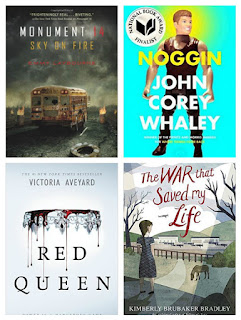Marci Glaus, English language arts consultant at the Wisconsin Department of Public Instruction, contributed this post.
In the
video trailer for Wisconsin Writes, you will hear Nickolas Butler say
“you can’t be a good writer unless you’re a reader.” Through the author
interviews and in review of the footage, I noticed a trend developing among
most of the authors who participated in the project saying the same thing. The
basis for such agreement is simply the idea that we can learn how to write by
reading great writing. But it is so much more than just reading.
How many times have your read something
and just let the story wash over you with little thought to the structure, word
choice, or what the writer was doing to help you get lost in the text? I do it
all the time. I found that I really have to step into a text much more purposefully
when I am reading with a writer’s craft in mind if I am going to learn anything
about writing. If I want to make my own writing better, I need to understand
and be able to name what other writers have done so that I can try it out for
myself if I find it useful. Even then, my writing can come in fits and starts
while I try to tackle what the pros have done in a way that fits with what I am
trying to do. It takes practice, but it is possible. Take, for example, speaker
and writer Tasha Schuh and company. She talks about
trying to start her first book several times, but growing frustrated each time
before figuring out how to plan and put her ideas together. She states that
while she loves to read, she had to find examples of books that she could use
as models for her own. They helped her get started in her writing process which
ended with her first book and landed her here, in this video series, working on
her second.
Linda Godfrey
advises students not only to “write, write write, and write some more,” but to
“read, read read, and read some more.” She says this based on her own
experience as a writer who ended up writing about things she never thought she
would. Through extensive reading and writing experiences, she was able to step
into different genres with success. This holds true with other writers who
participated in Wisconsin Writes.
Stay
tuned for the end of this school year when Nickolas Butler is featured, writing
in a genre very few people (including himself) would expect to find him.







